An algal bloom is the overgrowth of microscopic algae or cyanobacteria. Depending on the type of algae or cyanobacteria involved, a scum can form or may tint the water shades of green, blue, yellow, brown, or red. When an algal bloom produces toxins or other conditions that are harmful to humans or other organisms it is labeled as a harmful algal bloom, or HAB.
Within the Conewango watershed, Bear and the Cassadaga Lakes along with the Conewango Creek see blooms infrequently. Chautauqua Lake experiences algal blooms more often. The pictures below show two types of cyanobacteria found in water samples collected in the South Basin of Lake Chautauqua in August, 2020.
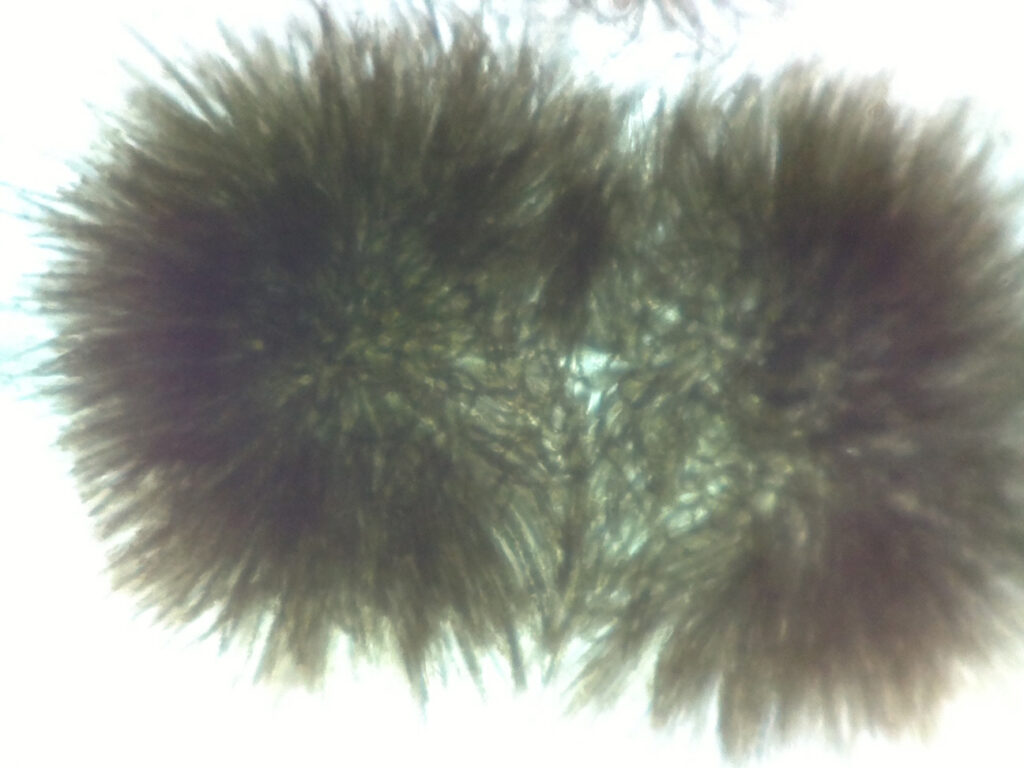
Cyanobacteria Gloeotrichia colony, Chautauqua Lake,
South Basin: sample collected on 8-9-2020 by Doug Conroe
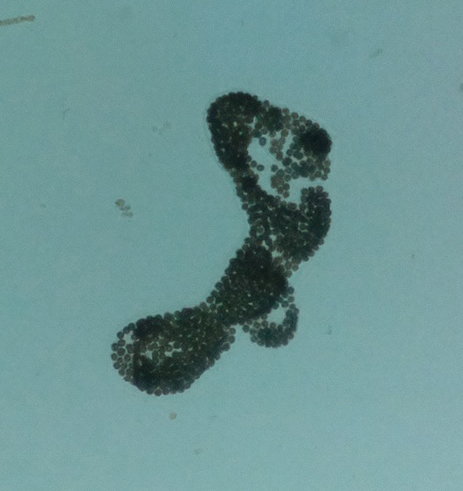
South Basin: sample collected on 8-22-2020 by Doug Conroe
Chautauqua Lake is considered a highly productive system (eutrophic) due to the availability of nutrients – especially phosphorus (P) and nitrogen (N). Sources of these nutrients in the lake include runoff from the surrounding watershed, seepage from inadequate septic systems, and release from sediments in the lake. During summer months when both lake temperatures and daylight hours increase, the conditions are favorable for the uncontrolled growth of green and cyanobacteria (incorrectly commonly called, blue-green algae). Algal blooms can be labeled as a HAB if oxygen levels in the water are reduced or toxins are released. Algal blooms have been recorded in Chautauqua Lake since the 1930’s and HABs have been documented since 2012.
On the surface:
Algal blooms can be seen in surface waters and can tint the water. Blooms often appear as green streaks or look like pea soup. Examples of the appearance of algal blooms are shown below.
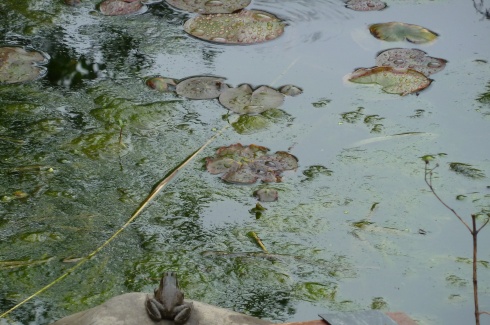
Image source: NYSDEC
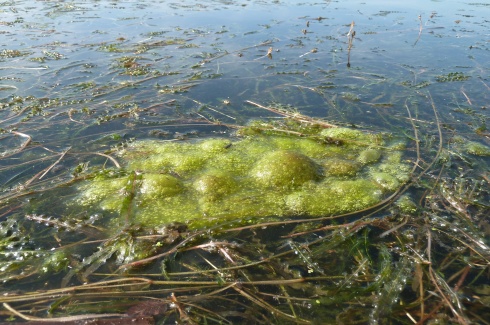
Image source: NYSDEC
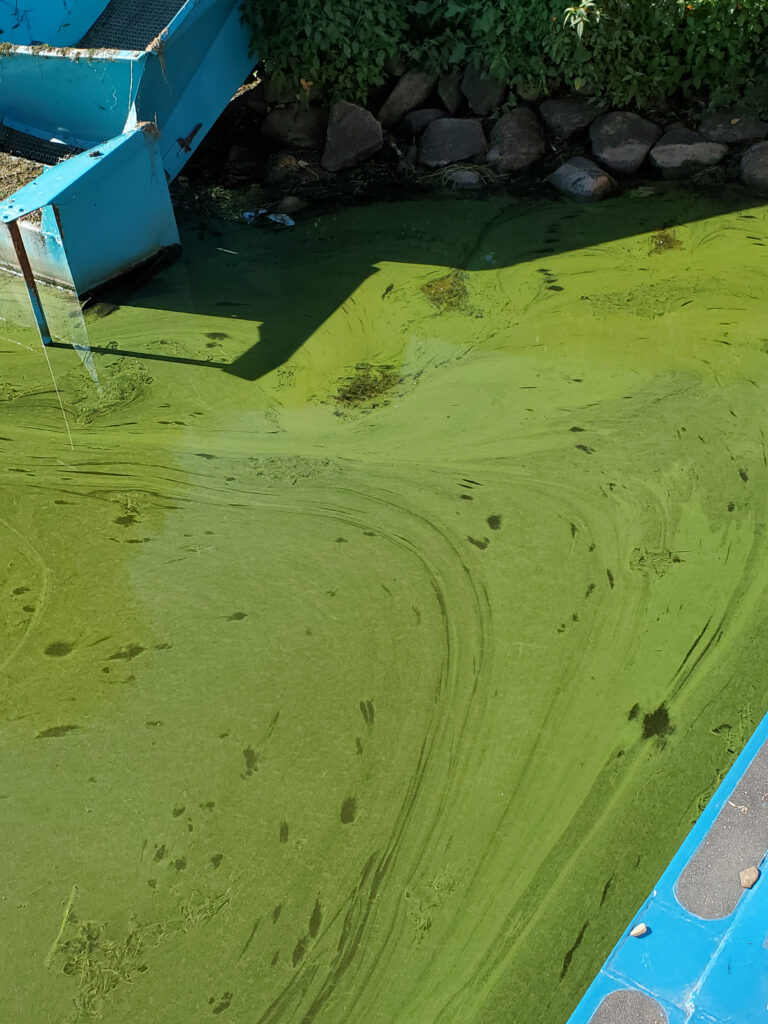
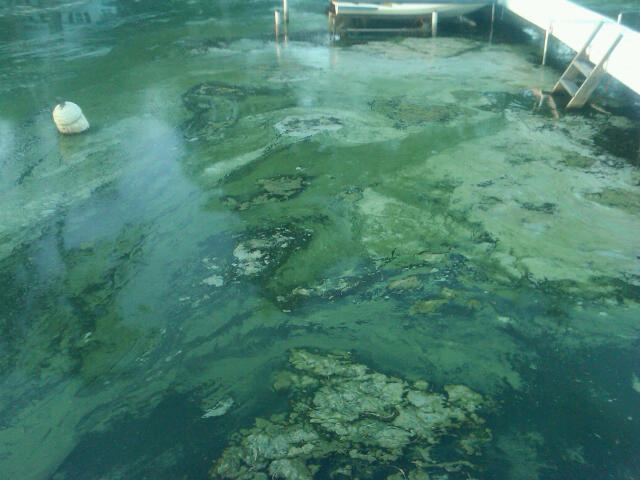
Blooms can be seen by orbiting satellites:
Sensors on orbiting satellites are used to spot blooms. The images below are examples of what an algal bloom looks like from space.
View additional satellite imagery of Chautauqua Lake HERE.

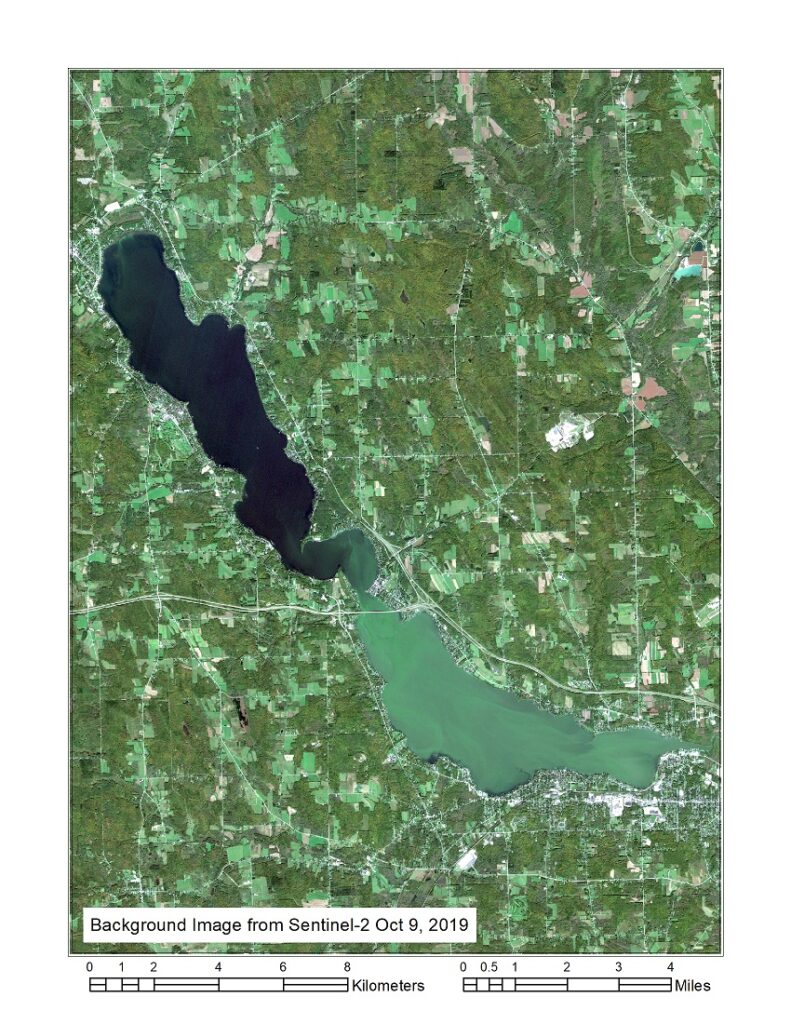
These images were derived using Landsat data downloaded from the USGS Earth Explorer website: https://earthexplorer.usgs.gov/.
Click here to learn more about sensors on Landsat 8 and the images produced.
What is a HAB?
HAB stands for Harmful Algal Bloom. HABs are colonies of algae or cyanobacteria that grow rapidly. They are identified as harmful when they cause toxic or harmful effects on people, fish, birds, and mammals. New York State Department of Environmental Conservation (NYSDEC) provides a website with an up-to-date map of HABs in the state and the process to report them. To visit this website, click on the following link: https://nysdec.maps.arcgis.com/apps/webappviewer/index.html?id=ae91142c812a4ab997ba739ed9723e6e
Where do HABs form?
HABs occur in all 50 states and around the world – in freshwater rivers and lakes and in marine coastal areas. The frequency of HABs is increasing and appears to be related to climate warming and increased human activity that increases nutrients.
Why do HABs form?
Factors that are known to contribute to HABs are excess nutrients such as phosphorus (P) and nitrogen (N), warm water, and the availability of sunlight in the upper layer of the water column. The interplay among these and other factors is not fully understood and scientific research studies continue to better understand HAB formation.
Chautauqua Lake is one of 12 priority lakes in New York’s HABs Initiative with an action plan to address the causes of HABs in the lake – “Harmful Algal Bloom Action Plan – Chautauqua Lake”, NYSDEC. To view this plan, click the following link: https://www.dec.ny.gov/docs/water_pdf/chautauquahabplan.pdf
Are all HABs dangerous?
Some HABs contain cyanobacteria that can produce toxins that are dangerous. Because the cyanobacteria need to be identified and the toxins need to be measured by scientists, the potential harm is not easily quantified. For health and safety, avoid contact with surface scums or discolored water. People, pets and livestock should avoid swimming or drinking water in algal bloom areas. For more information about the risks associated with HABs, check out some of the resources listed in the ‘Learn More’ section below.
Can HABs be prevented?
Reducing the input of nutrients is key to controlling HABs. Efforts to reduce runoff from the watershed, planting buffers around the shore, and better waste water treatment can help reduce nutrient loading.
Chautauqua Lake Algae Demonstration Project: HABITATS
HABITATS is a demonstration project conducted by the US Army Corps of Engineers Engineer Research and Development Center (ERDC). The study involves the use of a skimmer to gather algae and convert the concentrated product into bioenergy or fertilizer. On-shore sites were located at the Chautauqua Lake Association in Lakewood and at Long Point State Park. The ERDC will publish a technical report summarizing the project by late 2020. For more information, click on the following link: https://www.erdc.usace.army.mil/Media/News-Stories/Article/2326359/erdc-new-york-state-research-algal-bloom-mitigation-in-chautauqua-lake/
Learn more about HABs through the following resources:
Basics of algal blooms and HABs, Natural Resources Defense Council
https://www.nrdc.org/stories/freshwater-harmful-algal-blooms-101
Environmental Protection Agency, Harmful Algal Blooms
https://www.epa.gov/nutrientpollution/harmful-algal-blooms
NASA Earth Observatory
https://earthobservatory.nasa.gov/images/146983/early-detection-of-algae-yields-savings
National Oceanic and Atmospheric Administration
https://www.noaa.gov/what-is-harmful-algal-bloom
https://oceanservice.noaa.gov/facts/why_habs.html
HAB-Associated Illness, Centers for Disease Control and Prevention
https://www.cdc.gov/habs/general.html
Q&A with scientist Michelle Newcomer on looking for unexpected causes of HABs, University of California Berkeley Lab:
“The Recipe for a Harmful Algal Bloom – Many ingredients mix in the ocean to make toxic shellfish”
Woods Hole Oceanographic Institute, Oceanus Magazine, 2018:
https://www.whoi.edu/oceanus/feature/the-recipe-for-a-harmful-algal-bloom
